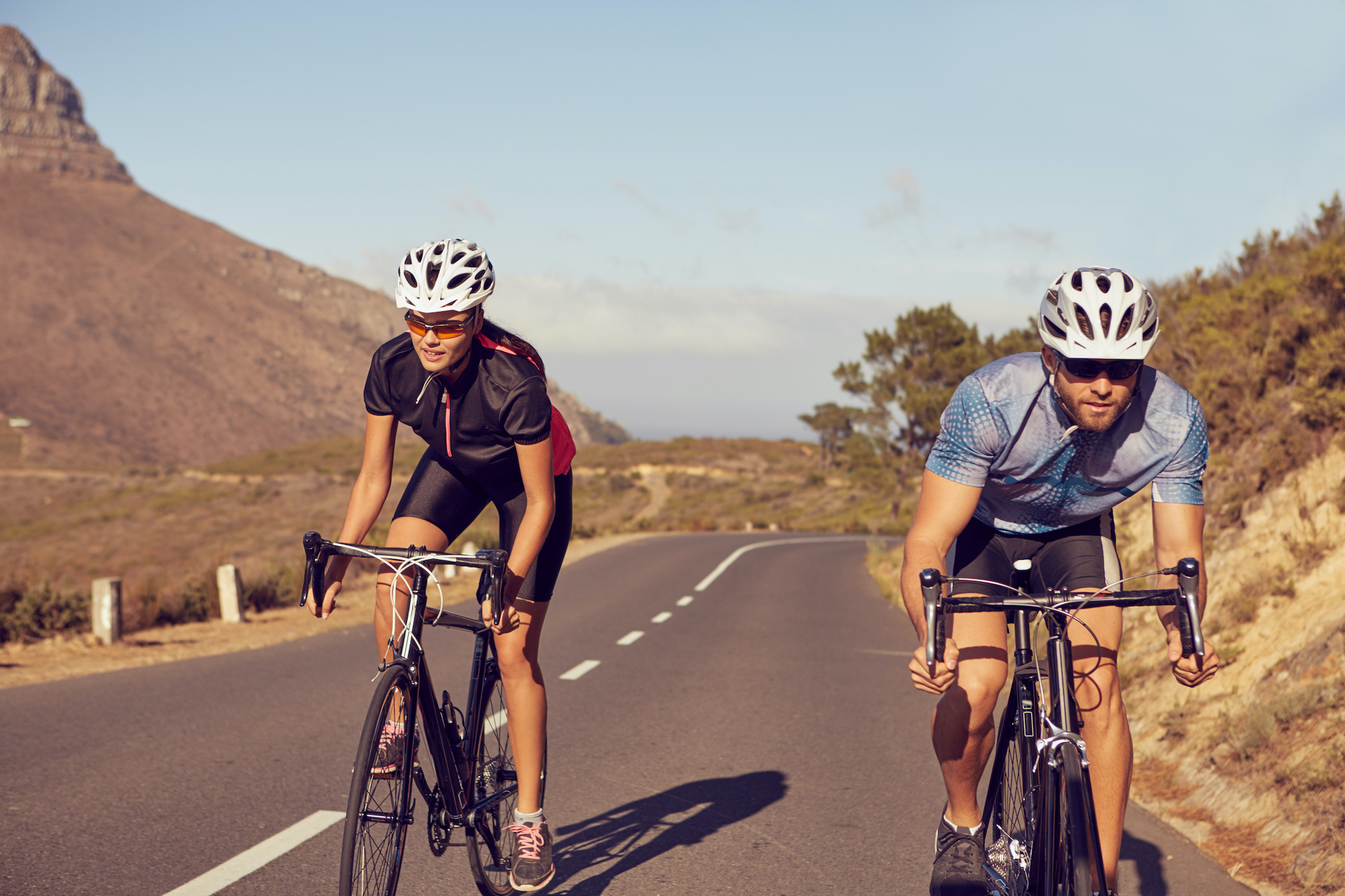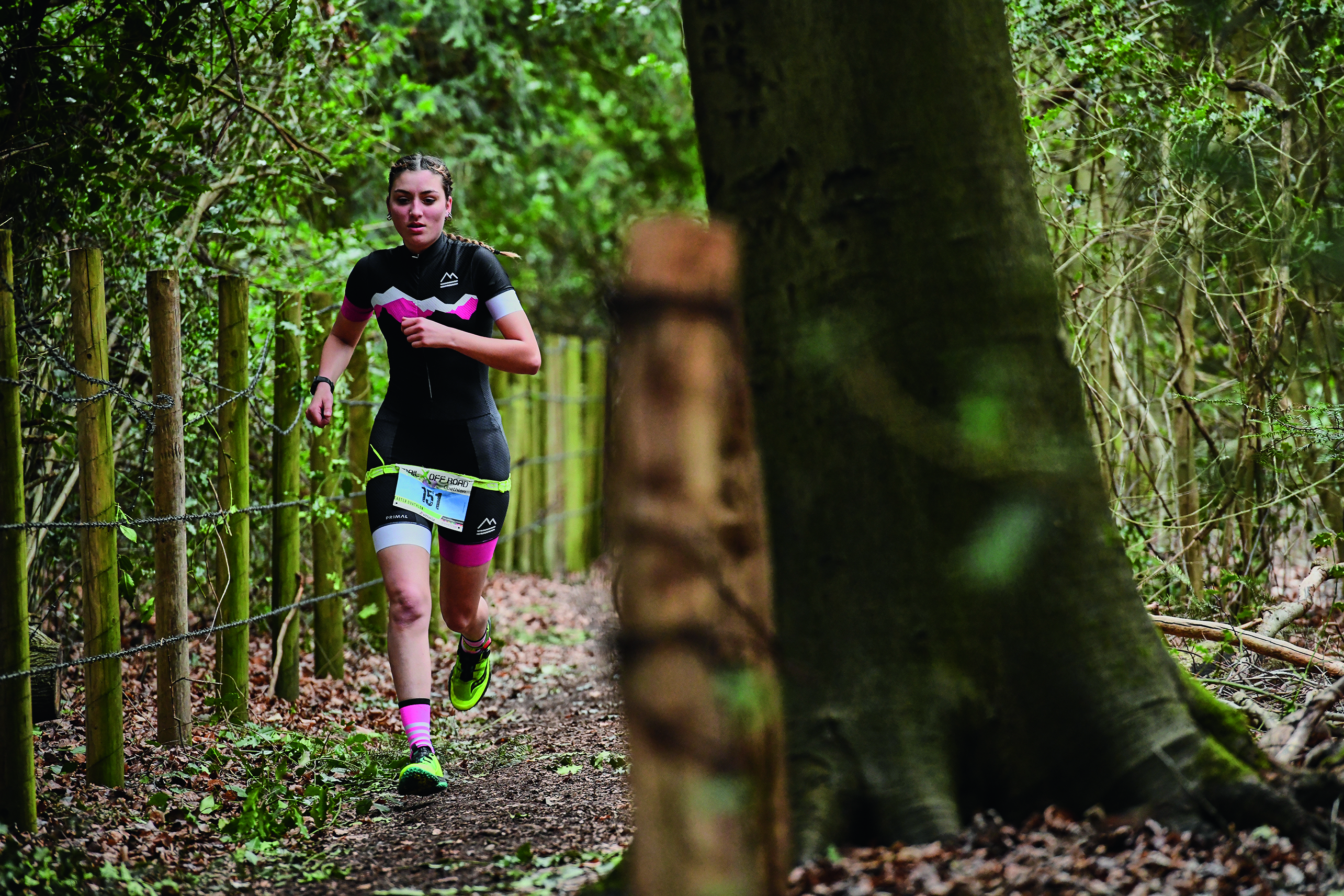What are the most common injuries among female triathletes?
Sports therapist Chris Kitson explains how best to avoid, manage and treat the most common injuries among female triathletes

While many injuries affect both men and women equally, there are some that tend to affect women more. Here, sports therapist Chris Kitson explains what they are and how you can deal with them.
In my line of work, what I find is that the majority of triathletes – male or female – suffer from overuse injuries and more specifically in the running portion of training. This is backed up by an epidemiological study (Zwingenburger et al 2013) in the Journal of Sports Sciences, which states that most triathlon-related injuries occurred during running (50%) followed by cycling (43%) and swimming (7%).
Digging deeper, in the Journal of Sports Science and Medicine Francis et al (2019) found that the most prevalent sites of injury were in the knee (28%), ankle/foot (26%) and shin/tibia (16%).
Overuse injuries are often related to managing load tolerance, which can be down to programming issues as well as a lack of ‘tissue capacity’, which can be increased through strength and conditioning work.
Typically we think of overuse injuries occurring due to overtraining and under-recovery, and there’s evidence to support this. However, it can also be as a result of under-training, where the tissues aren’t conditioned to handle the loads we require when it comes to racing environments.
Although it seems plausible that high training loads increase the risk of overuse injuries, what’s more important is how we reach the point of being able to tolerate said load, which requires efficient programming.
Overall, excessive acute (the current week of training) training loads are relative to whatever our chronic training loads are (the past four to eight weeks of training). If there’s too big of a jump in training load in the current week compared to the average of the training in the past four to eight weeks, this may increase injury risk.
- How much swimming should triathletes do?
- How much cycling should triathletes do?
- How much running should triathletes do?
Gender differences

Now we’ve covered the main types of injury, let’s look at those more associated with female athletes. Within the Francis et al. 2019 study, the proportion of knee injuries was found to be greater in females than males (40% vs. 31%), and patellofemoral pain syndrome (PFPS) was the highest reported diagnosis for knee pain in female triathletes. (It’s important to note here that all triathletes are at risk of soft-tissue injuries for different reasons as injury is multifactorial.)
The following have been observed in female athletes with PFPS: reduced hip external rotator strength, reduced hip abductor strength and reduced quadricep strength. Just bear in mind that this has been found in subjects with pre-existing symptoms so we have to consider that this may be a representation of changes due to symptoms.
The main risk factor seems to be sharp increases in training load, with females at apparent υ greater risk of developing PFPS compared to males given the data. With regards to why this is, there are no clear findings. But it’s been proposed that there may be risk factors due to:
- Anatomical variance (such as natural variances between the male and female pelvis and femur which alters both neuromuscular demands, but also different stresses on the patellofemoral joints).
- Differences in neuromuscular control between the pelvis and knee.
- Laxity in the knee joints.
We tend to split risk factors like these into ‘modifiable’ and ‘non-modifiable’, with changes in strength being an example of modifiable and changes in anatomy being non-modifiable. Overall, it still comes down to ‘too much too soon’ being the highest risk factor for overuse injuries, as there are plenty of female triathletes with these same anatomical variances who don’t experience any issues.
- Do female athletes have a higher injury risk than male ones?
- What specific strength training should female athletes do?
Address your training load and recovery
In training, we need to find an acceptable level of load by manipulating the frequency, intensity, volume, duration, terrain etc. We still don’t have an optimal for everyone as it seems to be a highly individual process. Rate of recovery via physiological variance, as well as supporting lifestyle factors such as sleep, stress management and nutrition, is vital, as we can only adapt from training stimulus we can recover from.
Bone-stress injuries
Bone-stress injuries are also more prevalent in females than males. There are many potential contributors to this, but mainly it comes down to changes in estrogen, which affects bone turnover and density. Females who start their periods late, as well as those with menstrual dysfunction, seem to be at a higher risk of developing bone-stress injuries.
Risk factors such as RED-S (‘relative energy deficiency in sport’, which is the result of insufficient caloric intake and/or excessive energy expenditure) can contribute, as well as a lack of muscular strength to help reduce bone loading.
Menstrual cycle
Studies indicate that there are points in the menstrual cycle where the risk of injury may be increased. This is due to hormone fluctuations and their effect on soft tissues. For example, there’s an increased risk of anterior cruciate ligament (ACL, the ligament which stabilises the knee) injury just before ovulation.
High estrogen levels are also associated with increases in joint laxity and changes in neuromuscular control. This highlights the importance of tracking your cycle and adapting training accordingly.
- How to adapt your training around menstruation
- How does the menstrual cycle impact training and racing?
Menopause and tendon changes
From around the age of 30, sarcopenia (the loss of muscle mass) can start to manifest in some females. From the age of 50, we tend to see a muscle loss rate of 10-15% per decade, although this can be slowed down with exercise and resistance training.
Once females start to enter a menopausal status, we also often see changes in tendon properties due to a drop in estrogen, which can lead to a greater risk of developing overuse tendon-related disorders. Again, strength training and appropriate in-sport programming may help mitigate this risk to some extent.
As we age, modifications to training load should be implemented to allow for the variance in recovery rates. Tendons can lose their ability to transmit forces with age so strength and power training should be included in your schedule to help maintain their efficiency.
Examples include slow, heavy resistance training and plyometric exercises such as pogo jumps (similar to using a skipping rope) and hops. But always consult a professional before embarking on any new type of exercise.
Tips to reduce your risk of injury
Learn about effective training load management. Consider small increases in weekly volume – I’m sure most have heard of the 10% rule (although this doesn’t necessarily apply to athletes returning from injury or with high weekly mileage). There are also progressive training plans available via the Her Spirit app for running, cycling, swimming and triathlon.
Remember that training load is about more than just weekly volume. Don’t forget about the effect of different types of terrain, elevation, changes in speed, weather conditions and the effect this has on different soft tissues as well as overall intensity.
Plan recovery into your racing schedule. It takes time for your body to fully recover and go again at such intensity, so plan in your ‘A’ races and use your ‘B’ and ‘C’ races to train, tune up and recover.
Spend as much time optimising your recovery as you spend training. Look at ways to improve your sleep duration and quality, nutrition, stress management, and hydration status. These are all included in Her Spirit’s six-week ‘Learn to Fuel’ programme and via 1-2-1 coaching with the expert team.
Consider adding strength training to your schedule. Studies have shown that as little as 10mins per day can be effective for increasing performance and potentially reducing certain types of injury. Her Spirit has a comprehensive timetable of strength classes online, with 1-2-1 coaching also available on request.
Listen to your body. You know your body better than anyone else. If something doesn’t feel right and you’re feeling shattered, do the sensible thing and give yourself a day off.





